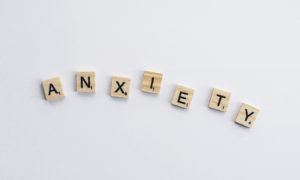
The World Health Organization recognizes anxiety disorders as having a significant effect on global health (Alonso, Chatterji, & He, 2013). https://books.google.ca/books
Generalized anxiety disorder (GAD) is a disorder defined by characteristics of persistent and generalized excessive anxiety and worry. It is often accompanied by somatic symptoms such as muscle tension, gastrointestinal dysfunctions, migraines and headaches and sleep disturbances (Crocq, 2017). https://www.tandfonline.com/doi/full/10.31887/DCNS.2017.19.2/macrocq
Anxiety is an adaptive response to stressful or threatening behavior. It helps to prepare the body and maintain homeostasis, but if it becomes excessive or uncontrollable without due reason, it may become pathological (Aminoff, Boiler, & Swaab, 2012).
Aminoff, M., Boiler, F., & Swaab, D. (2012). Handbook of clinical neurology. Amsterdam, Netherlands: Elsevier.
Osteopathy is a manual therapy that was developed in 1874 by Andrew Taylor Still, who was an American physician. It is practiced by accredited therapists who use a variety of techniques including gentle manipulations, cranial sacral techniques, myofascial work, visceral techniques and muscle energy techniques (Korotkov et al., 2012). Osteopathy has the potential to assist in the treatment of GAD because osteopathy observes the person as a whole, considering the unity of the body and mind (Still, 1902; Williams, 2007).
https://www.liebertpub.com/doi/abs/10.1089/acm.2010.0853
Osteopathic care consultations are longer compared to primary care settings, explanations during treatment are not rushed and a more thorough physical examination is possible resulting in the potential for a strong rapport between patient and therapist (Williams, 2007). Williams et al., (2003) created a study measuring the outcomes of spinal manipulations measured by the Extended Aberdeen Spine Pain Scale, the SF-12, EuroQoL and Short-form McGill Pain Questionnaire. Results showed patients receiving osteopathic care experienced
psychological benefits due to the therapist’s reassurance, improved understanding, removal of fear, and a positive approach that encouraged exercise rather than rest. This was statistically significant throughout the 12-week study but also remained statistically significant at six months post treatment.
https://academic.oup.com/fampra/article/20/6/662/530845
Korotkov et al., (2012) studied the effects of osteopathic spinal manipulations on mood and muscle tone using the validated tool gas discharge visualization electro-photonic imaging to show the participants’ florescent glow before treatment, just after and 30 minutes after. It measures the human bio field by calculating the parameters of finger corona discharge patterns that are produced by the high-voltage electrophotography and then recorded and analyzed by a computer (Korotkov et al., 2012). The study included 33 subjects from athletic backgrounds.
All were treated by Dr. Serge Paoletti and were found to be in a good mood post treatment. As well, muscle tension and pain were no longer present when reassessed. This study explored how osteopathic treatments promote the body’s ability to self-regulate, positively influence quality of life, normalize the body’s functions and provide lasting relaxation (Korotkov et al., 2012). Seventy percent of subjects had a statistically significant positive psychosomatic response from the electromyogram, 81% showed a positive response to the somatic state directly after the treatment as well as 30 minutes post treatment, blood pressure and pulse rate decreased after treatment (Korotkov et al., 2012).
Osteopathic family physicians see anxiety disorders as both biological and psychological and being in a chronic hyper reactive state (Blumer & Blumer, 2017). The advised 10 minute approach for these physicians includes cervical soft tissue/long axis kneading, cervical high velocity/low amplitude to improve heart rate variability, sacral decompression, sub occipital/Oa decompression thought to affect the vagus nerve, doming the thoracic diaphragm and compression of the fourth ventricle (Blumer & Blumer, 2017).
The Dixon et al., (2020) study on the effect of GOT on generalized anxiety measured by the Hamilton Anxiety Scale (HAM-A), Beck Anxiety Inventory (BAI) and IUS was an open-label, nonrandomized, black-box study with 26 participants who had previously received eight weeks of standard care prior to receiving five general osteopathic treatments over 9 weeks. Statistical significance was found in the HAM-A and the IUS; the author discussed that this could be due to these measurements being more specific to the GAD over any other anxiety disorders in comparison to the BAI (Dixon et al., 2020).
0 Comments